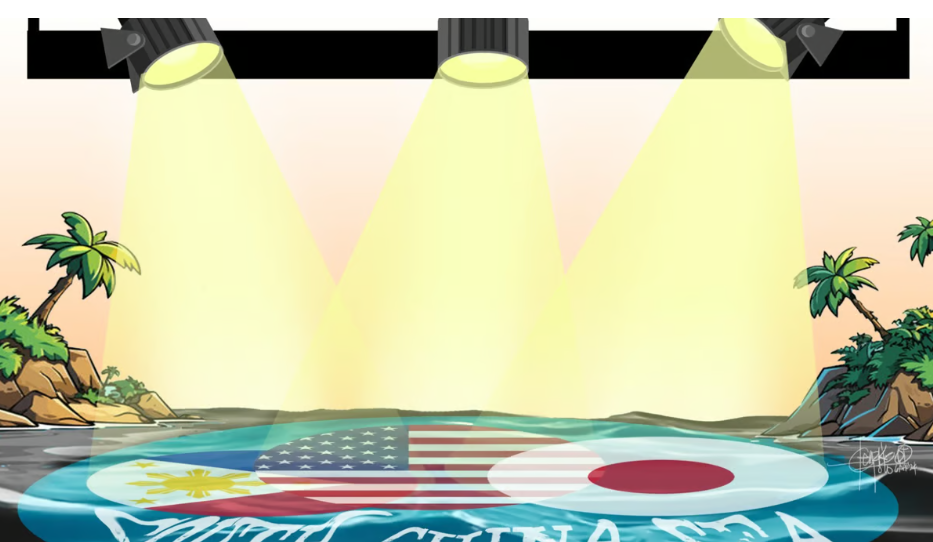For the Philippines especially, the summit will lead to an added boon, particularly as strengthened economic relations is an expected major topic.

Indubitably, President Ferdinand Marcos Jr.’s meeting on 11 April at the inaugural Trilateral Leaders Summit among Japan, the Philippines, and the United States hosted by the White House in Washington D.C. will agitate China even further.
By all indications, Beijing will view the meeting of the heads of state of the three nations as a tightening of the ties that bind the US and its treaty allies, who are all opposed to China’s aggressive moves in the South China Sea.
Moreover, Japan and the Philippines are situated in what could be the most critical locations were the US to come to Taiwan’s aid against a Chinese invasion.
But how much more intensely aggressive can China’s actions be against Philippine Navy patrols and resupply missions in the West Philippine Sea — which a pigheaded China insists are violations in an area it, and not the Philippines, has sovereignty over?
Could Chinese aggression be more violent than when China Coast Guard cutters water cannon-blasted Unaizah Mae 4, the civilian vessel contracted and manned by the Philippine Navy which attempted to resupply the BRP Sierra Madre outpost at Ayungin Shoal on 23 March?
Footage of that last attack — the ninth and most violent so far since China Coast Guard cutters started blocking monthly Philippine Navy-operated runs to the World War II era BRP Sierra Madre — showed that the high-pressure blasts severely damaged the resupply vessels, injuring at least three sailors and threatening the lives of the others on board.
That last incident was the latest of a series of violent incidents, which included the ramming of Philippine vessels and the use of deafening acoustic devices and lasers. So far, the Philippines has been able to push back on China.
Still, the West Philippine Sea situation remains extremely dangerous as it is where potentially a direct conflict between the US and China could occur amid a scenario where Chinese belligerence would trigger the 73-year-old Mutual Defense Treaty between the US and the Philippines.
As Gregory B. Polling, senior fellow and policy director at the Center for Strategic and International Studies Southeast Asia Program and Asia Maritime Transparency Initiative, pointed out in a recent briefing on the 11 April Trilateral Leaders Summit, “it is a place where clearly the Philippines needs support from partners in order to deter China from moving out of this gray zone to outright military aggression.”
That “gray zone” refers to varied activities conducted beyond peace but short of war, including nefarious economic activities, cyberattacks, disinformation campaigns, and the like — all short of actual armed conflict.
There’s a debate on whether China’s firing of water cannons could be regarded as a “gray zone” tactic that falls just below the threshold for activating the US–Philippine MDT.
Under the MDT, a Pacific-area armed attack on either party would trigger actions on island territories under Philippine jurisdiction and on its armed forces and public vessels.
Is firing a water cannon tantamount to an “armed attack?” What if a uniformed service personnel dies on account of the water cannon blasting?
In all likelihood, actions and other matters pertaining to “gray zone” tactics will be addressed at the trilateral summit, even as the Philippines, Japan, and the US are expected to put up a joint cyber defense framework designed to protect against rising attacks by China, Russia and North Korea.
In Tokyo, Prime Minister Kishida disclosed to media that the three countries at the summit will work to launch cooperative projects involving semiconductors, clean energy, critical minerals and digital and communication networks.
For the Philippines especially, the summit will lead to an added boon, particularly as strengthened economic relations is an expected major topic.
In March, US Commerce Secretary Gina Raimondo led the first-of-its-kind presidential trade and investment mission of over 20 top business people to explore potential investment opportunities in the Philippines.
Kin Moy, principal deputy assistant secretary for the US State Department’s Bureau of East Asian and Pacific Affairs, was reported as saying that the US and the Philippines will be co-hosting the Indo-Pacific Business Forum in Manila in May.
Moy described the IPBF as “the premier US commercial diplomacy event in the region” and highlighted the $11 billion in new investments and about $100 million in new US economic initiatives launched when the US and Japan chaired the forum in January last year.
“We look forward to similar outcomes in Manila this year,” he said.
Potential prosperity, yes, in exchange for an alliance designed to cement the Philippines’ position in the US’s broader plans to counter moves by China against Taiwan and assistance from the US (and Japan) against continued Chinese belligerence in the West Philippine Sea.
At this point, how long these hostile actuations by China will remain in the “gray zone” is anyone’s guess.
*****
Credit belongs to: tribune.net.ph
 Atin Ito First Filipino Community Newspaper in Ontario
Atin Ito First Filipino Community Newspaper in Ontario






